10 Tips for a Low-Maintenance, Eco-Friendly Backyard
Protecting the environment has never been more important, and it can start right in your own eco-friendly backyard. Incorporating eco-friendly design and maintenance into your landscaping will not only help to save the environment, but will also provide a beautiful, inviting yard that is simple to maintain. Incorporate the 10 tips below into your landscape design and soon you will be enjoying a low-maintenance yard that also just happens to make the world a little bit greener.
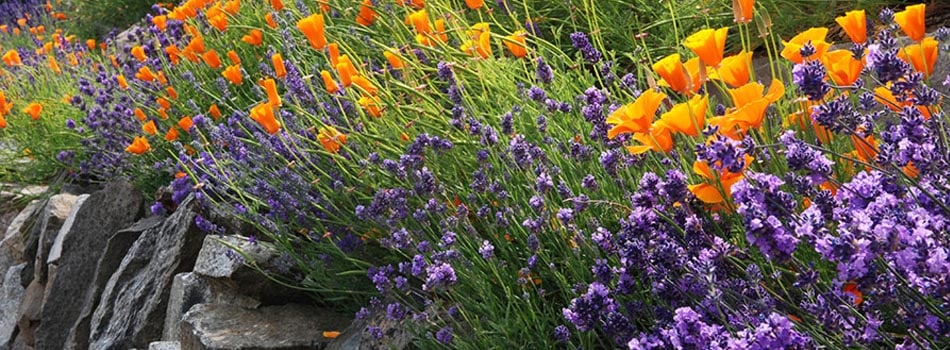
1. Choose native plants
When choosing plants and trees for your yard, look for flora native to your area. Native trees and plants provide habitat for and attract birds, butterflies, and other beneficial local wildlife, and are acclimated to local rainfall amounts and climate. Once established, native plants require very little maintenace because they are naturally resistant to local pests and disease. Because they do not need fertilizers, pesticides, or supplemental watering, they are easy and inexpensive to maintain and are environmentally friendly. For a complete native wildflower guide searchable by color and location, click here.
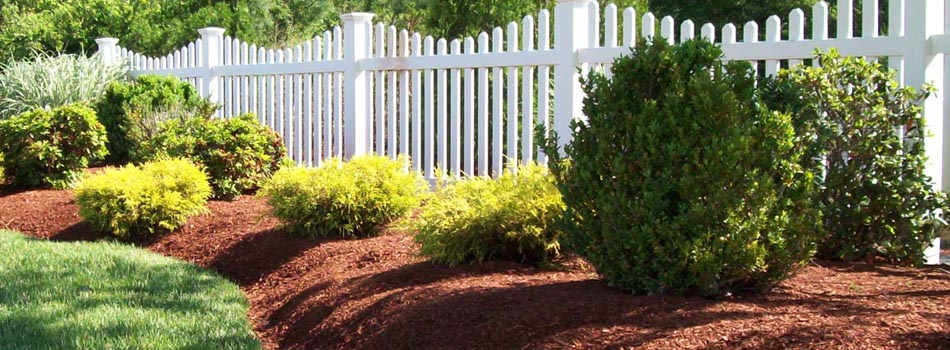
2. Mulch
Organic mulch such as wood chips, bark, leaves, and pine needles provides a host of benefits. Mulch regulates soil temperature and retains moisture, helping to keep plantings alive and healthy, and it also inhibits weed growth in flowerbeds, allowing for easier weeding. As it breaks down, organic mulch has the added bonus of adding nutrients to the soil. Mulching under trees to the drip line not only helps to retain moisture in the root area, but also reduces the footprint of your lawn. Grass lawns are water guzzlers, and incorporating mulch throughout your landscape can reduce outdoor water usage by as much as 50%. To save even more water, consider completely eliminating the lawn…
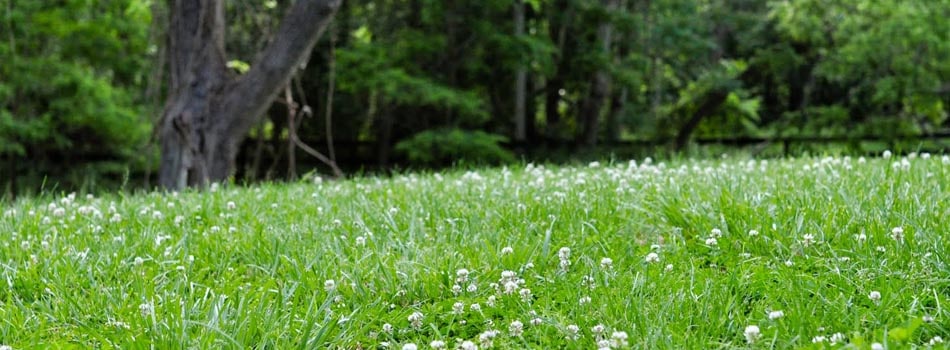
3. Plant ground cover instead of grass
Ground cover has many advantages over grassed lawns. Ground cover hugs the ground and requires little to no mowing, no additional watering, and no pesticides or herbicides. For shady areas, moss makes a beautiful lawn. Moss is green even in the high heat of summer, and feels wonderful under bare feet. Clover is an excellent groundcover for lawns in full sun. It stays green during times of drought, is sweet smelling, feels soft and cushiony underfoot, and helps to prevent soil compaction. If you wish to provide a habitat for bees, you can allow your clover lawn to bloom to attract them. If not, don’t worry – just give your clover lawn an occasional mowing to both promote growth and keep the bees away. Creeping perennials may also be used for groundcover lawns, many of which smell wonderful, need little maintenance, and feel soft underfoot.
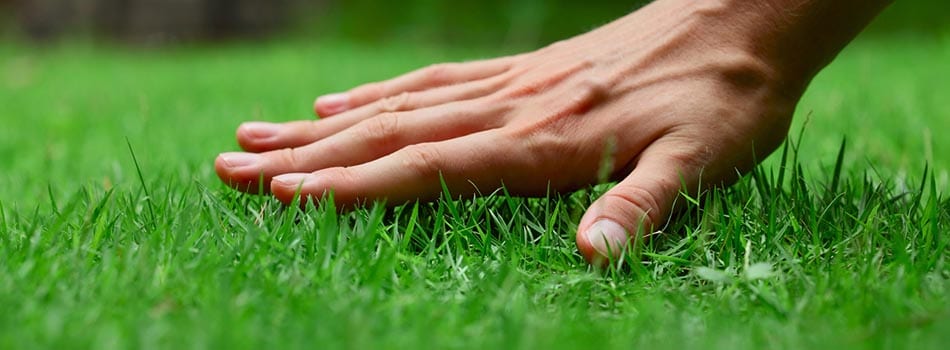
4. Keep your grass high and dry
When mowing, leave the grass higher (cut no more than a third of the total blade length at a time) and mow more frequently. Your lawn will retain more water and be healthier. Also, leave your grass clippings on the lawn. Grass clippings are 75-85% water, rich in nitrogen, and will keep your lawn moist and healthy. If you really can’t bear leaving the clippings on the lawn, you can discard them in your new compost bin…
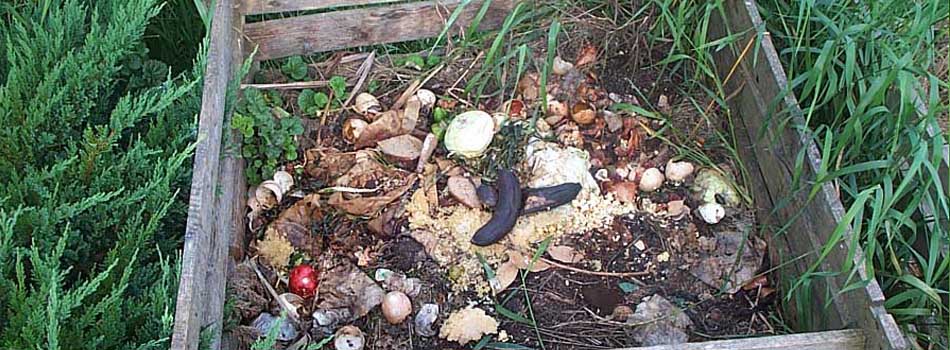
5. Start composting
Composting reduces the amount of garbage we produce and also produces natural, free fertilizer. All you need to start making your own compost is a warm, partly sunny area and some soil. If you wish to keep your compost pile out of sight, you can easily install a compost bin. In your designated area, add a mix of household and garden waste including fruit and vegetable scraps, eggshells, newspapers, wood shavings, weeds, and cardboard. This mix will provide the right environment for compost-making bugs, and within six to nine months, you will have rich, nutritious compost ready for use in your garden. Note: do not discard any animal scraps into your compost. For a complete list of compostable items, click here.
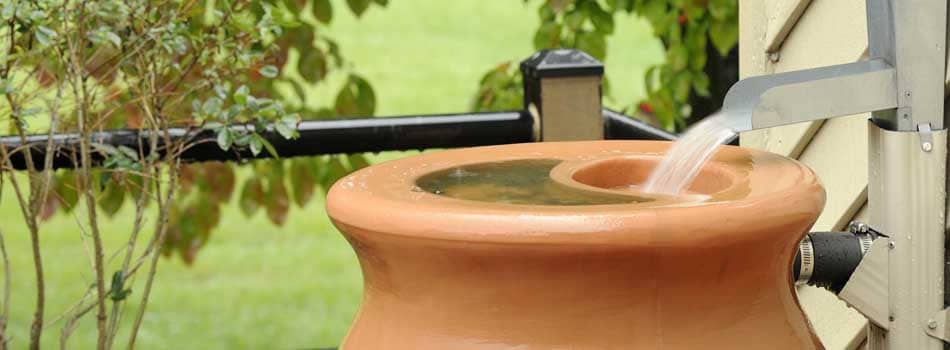
6. Harvest rainwater
Harvesting rainwater is one of the simplest ways to green up your landscape. Harvested rainwater is used to water plants, flowers, and vegetable gardens, greatly reducing the amount of outdoor household water usage. It also captures stormwater runoff from roofs and gutters, which prevents pollution from entering our water supply. Whether you choose to use rain barrels, cisterns, or rain chains, you will be greatly improving your water footprint with the use of a rainwater harvesting system.
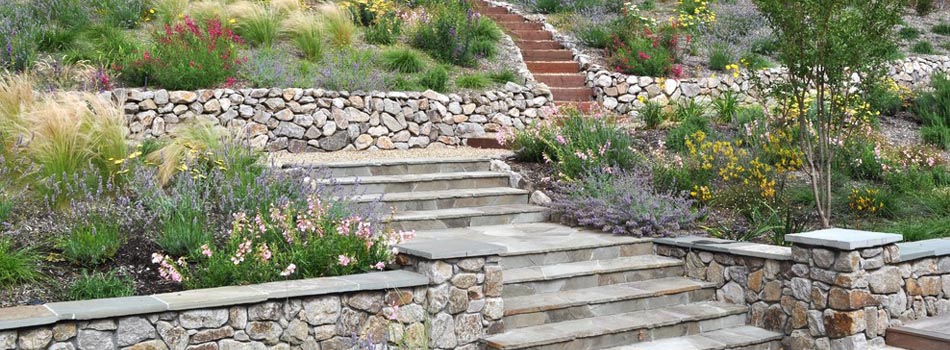
7. Use terraces on slopes
Not only are steep slopes difficult to mow and maintain, they also cause erosion and excessive stormwater runoff, two environmental concerns. However, terracing is an effective and attractive solution to prevent both erosion and runoff. Terracing involves leveling off sections of a steep slope into flat, planted areas that are perfect for flower or herb gardens, or for shrubs and mulch. These flat, planted areas allow rainwater to soak into the beds instead of allowing it to flow down the slope. While they can be somewhat costly to install, terraces are a beautiful and beneficial addition to landscapes.
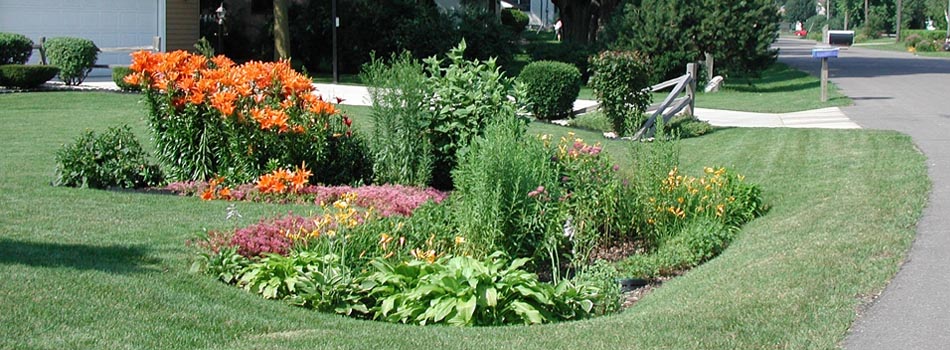
8. Plant rain gardens
Planted specifically where rainwater habitually pools, rain gardens are attractive landscaping elements that capture and filter stormwater. Utilizing native, flood-resistant plants and loosely packed, deep soils, they are able to absorb large amounts of rainwater and filter out pollutants. In addition, rain gardens have the added bonus of decreasing the surface area of your lawn while providing inexpensive, low-maintenance, and appealing landscaping.
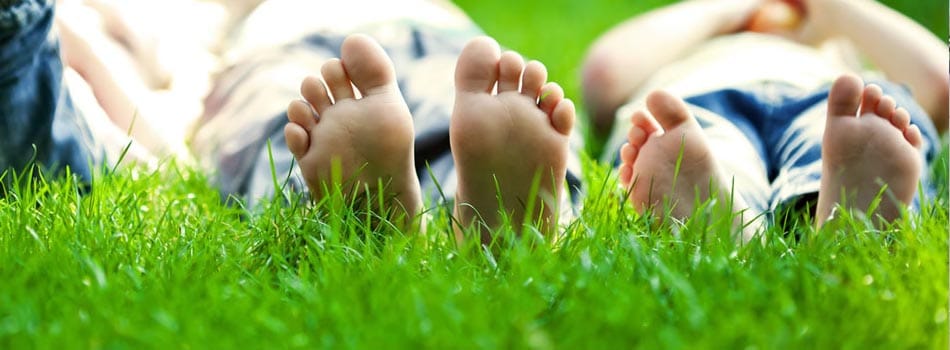
9. Eliminate or minimize the use of fertilizers
Standard lawn care, such as the type purchased at any local hardware store, involves dumping large amounts of chemicals, many simply not needed, onto the lawn. Dubbed “weed and feed,” these quick-release fertilizers and herbicides strip the soil of its nutrients and promote lawn disease, making the lawn dependent on the very chemicals that caused its damaged condition in the first place. A better option is to utilize organic fertilizer, and then use only as much as you actually need (typically this is less than half of what the manufacturer advises). Be sure to sweep up and dispose of any fertilizer that lands on paved or other impervious surfaces, and if you have a well for your drinking water supply, be sure to avoid fertilizing any areas in close proximity to or uphill from it. The best option is to completely eliminate the use of fertilizer and instead add compost and organic matter into your soil, aerate regularly, mow high, and incorporate moss and groundcover into your lawn.
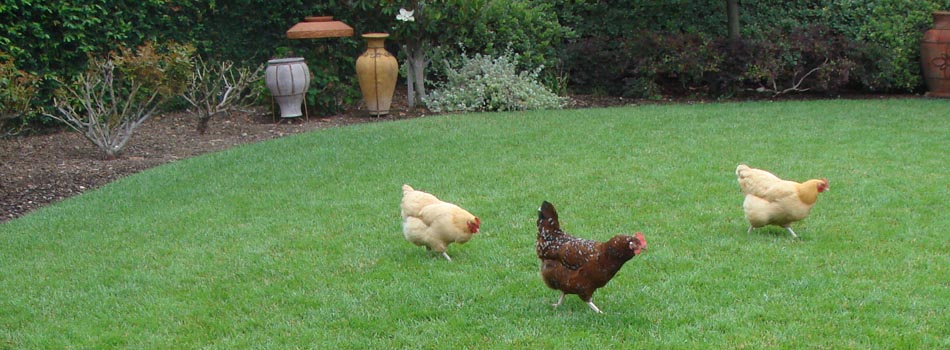
10. Use natural pest control and herbicides
Pesticides have long been known to be detrimental to both the environment and our health. DDT was outlawed in the U.S. in 1972, and Agent Orange is still causing health issues for Vietnam veterans and the Vietnamese population 40 years after the war. In addition, pesticides have recently been linked to the decimation of the bee population, which even the White House and the EPA have acknowledged is cause for concern. The good news is that Integrated Pest Management (IPM) controls unwanted pests in a way that is both sustainable and safe. IPM involves a combination of techniques such as hand-removal of weeds and insects, attracting beneficial insects such as lacewings and praying mantises, selecting native plants that are naturally resistant, and utilizing natural insecticides such as insecticidal soaps and oil sprays for mites, aphids, and mealybugs, and milky spore bacteria for grubs. Slugs can be caught by sinking yogurt cups filled with beer or milk into the ground or by leaving hollowed out grapefruit halves around your plants, and aphids and mites can readily be managed with ladybugs. For those with a truly rural bent, chickens are natural predator of ticks, and, if left free to roam, will gobble up lawn grubs while aerating — and fertilizing — the lawn.
Natural, holistic backyards protect our environment, save money, and, after initial implementation, are easily maintained with minimal effort. Follow these 10 tips and you will soon have a beautiful backyard that requires little maintenance, leaving you time to relax in your hammock knowing that you’ve helped make the world a greener place.
